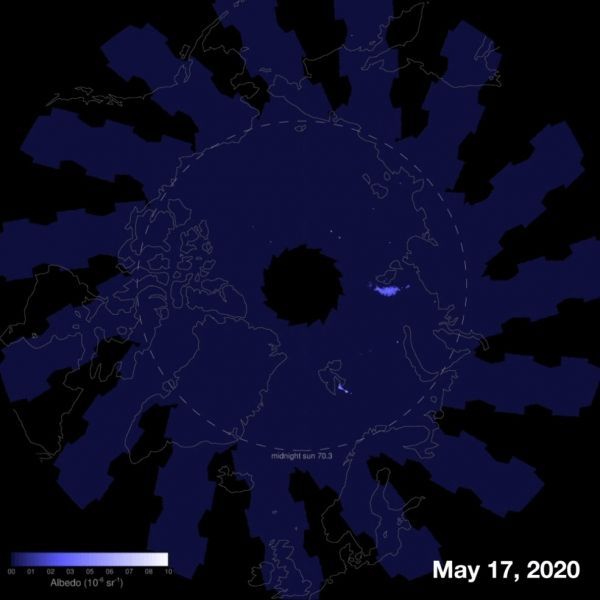NASA’s Aeronomy of Ice in the Mesosphere spacecraft — AIM for short — first spotted wisps of these noctilucent, or night-shining, clouds over the Arctic on May 17. In the week that followed, the ghost-like wisps grew into a blur, quickly filling more of the Arctic sky. This is the second-earliest start of the northern season yet observed, and the season is expected to run through mid-August.
The seasonal clouds hover high above the ground, about 50 miles overhead in a layer of the atmosphere called the mesosphere. Most meteors burn up when they reach the mesosphere; there are enough gases there to slough plummeting meteors into nothing more than dust and smoke. Noctilucent clouds form when water molecules congregate around the fine dust and freeze, forming ice crystals. The icy clouds, reflecting sunlight, shine bright blue and white. They first appear in summer — around mid-May in the Northern Hemisphere and mid-November in the Southern — when the mesosphere is most humid, with the season’s heat lofting moisture up to the sky.
Continue reading at NASA Goddard Space Flight Center
Image via NASA Goddard Space Flight Center


